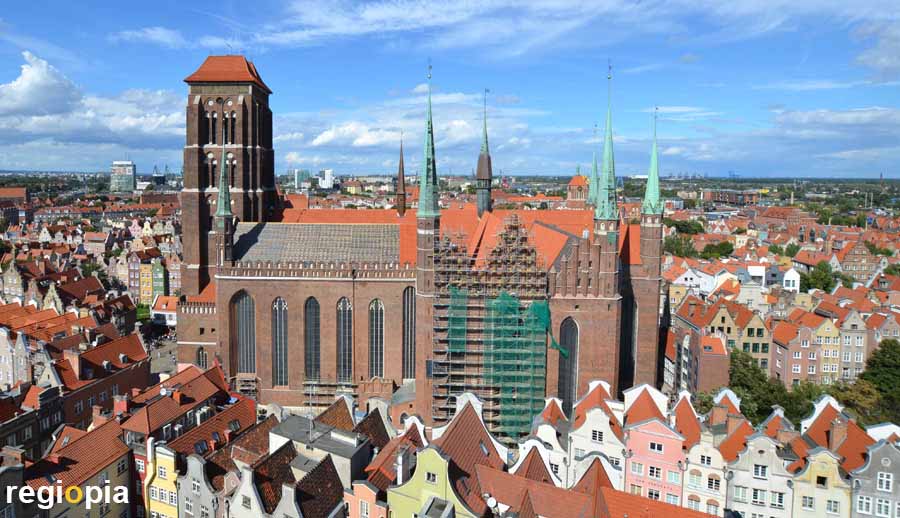
Gdansk Cathedral St Mary
The construction of the Gdańsk St. Mary's Church began in 1343. 1502, the three-nave church was completed. The Reformation of 1529 turned St Mary into a protestant church. Since 1945 Gdansk belongs to Poland and the Bazylika Mariacka became catholic again. During WW2, the attic burned down, 14 vaulted arches collapsed and the windows were destroyed. Reconstruction after the Second World War lasted until 1985. The beautiful Gothic star vaults in the nave were also restored. The triptych "The Last Judgment" from 1471 by Hans Memling is now in the National Museum of Gdańsk. The Cathedral St Mary is 105 m long and 66 m wide. The 30 m high interior can accommodate 25,000 people. The St. Mary's Church in Gdansk is the biggest Gothic brick church in the world. The 82 m high bell tower is the landmark of Gdansk.
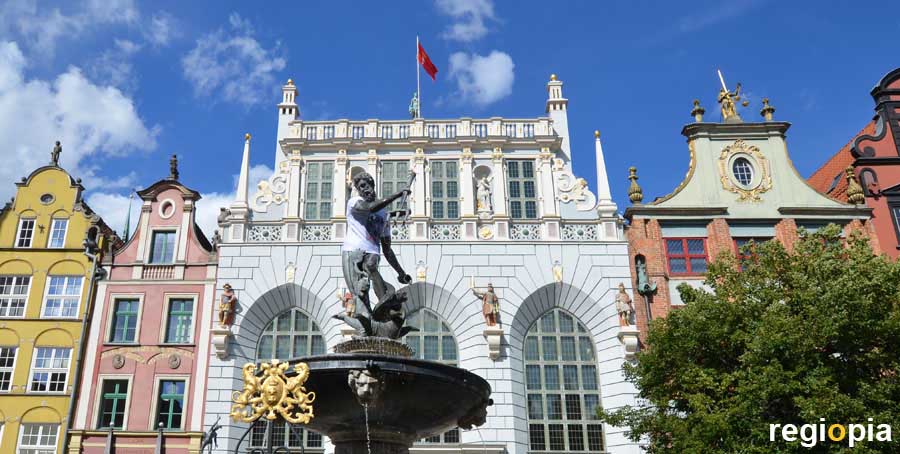
Dwor Artusa
The Court of Arthur Dwor Artusa at the Long Market, was the seat of german merchants and bankers. There were "Artus Höfe" in many cities of the Hanseatic League. At the Court of Arthur the mighty citizens gathered like the Knights around the legendary round table of King Arthur. The house was built in the 14th century, but burned down and was rebuilt in 1481. The large hall in the "Arthushof" is a bizarre smorgasbord that one must have seen. Very impressive are the ship models hanging from the ceiling and seem to float through the hall. The present facade dates from 1617. The house was the seat of Poland's first stock exchange.
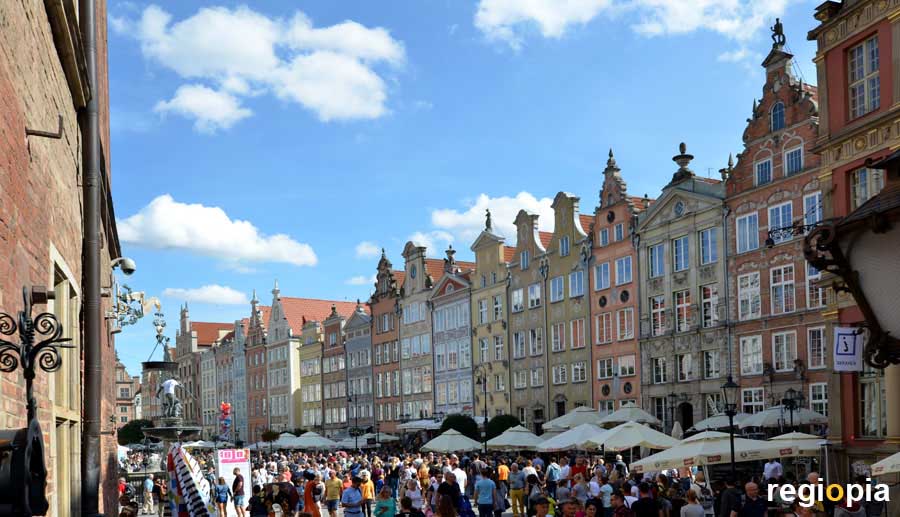
Dlugi Targ
The Long Market (Dlugi Targ) is the extension of Long Street (Dluga). The Long Street is the main shopping street in the historic center of Gdańsk's Glowne Miasto. You enter the Long Street through the Golden Gate (Zlota Brama) in the west and leave the Long Market via the Green Gate (Zielona Brama) in the east. The Long Street is characterized by the beautiful gabled houses, which were built by the Lübeck merchants from 1255 on. At Long Street 12 stands the Uphagen house Dom Uphagena of the Flemish merchant Uphagen, which was built in 1776 in the early Classicist style with Rococo elements. The house was designed as a museum and shows how one lived in a rich family in Gdansk in the 18th century. The Long Market is home of the Gdansk Town Hall and the Artus Court with the Neptune Fountain. Here you can also find the tourist office of Gdansk (Dlugi Targ 28).
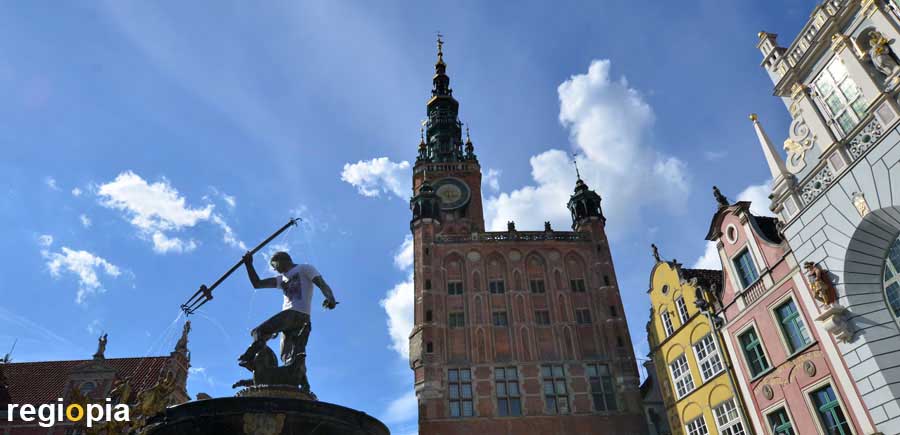
Ratusz Glownego Miasta
The town hall of GdanskRatusz Glownego Miasta was built in 1327 and has been extended several times. The 80 m high tower was completed in 1488. The famous Red Hall survived the war unscathed because its art treasures were outsourced. Today the town hall is part of the Historical Museum of Gdansk. At the entrance you have to decide if you want to buy all three tickets (tower, museum and gallery). In the gallery, there are temporary exhibitions on various topics, if one does not care about the topic, you can skip the gallery. One should not miss the "Red Hall" and the tower. The stairs to the tower are hard to climb but the view over Gdansk is realy great. This is one of the highlights of Gdansk that you should not miss.
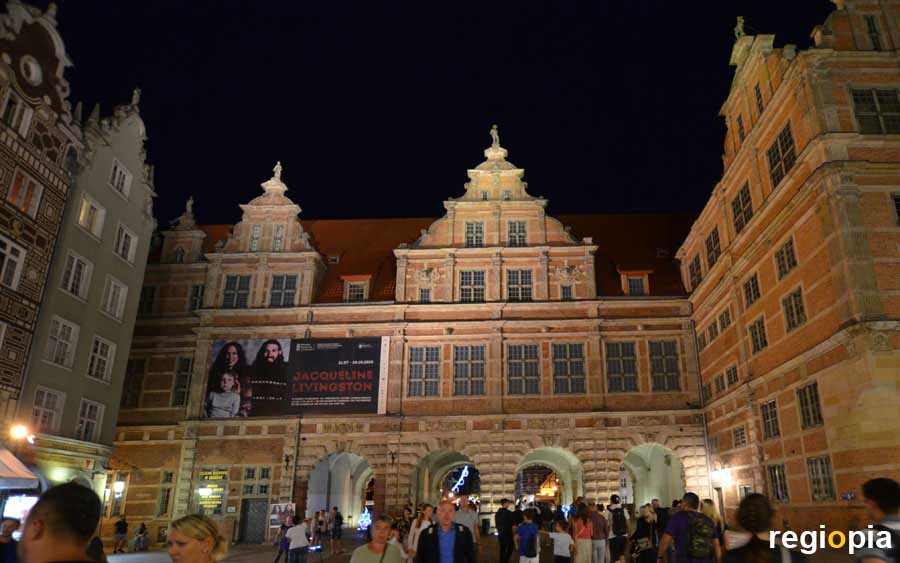
Green Gate
The Green Gate (Zielona Brama) was the main gate of Gdansk at the time of the Hanseatic League. It connected the harbor with the Long Market. The name "Green Gate" comes from the original "Koggentor", which was built from green sandstone. Behind the Green Gate is the Green Bridge (Most Zielony), which leads to the Docks of Gdansk. The Green Gate was rebuilt in 1568 to be a palace for the King of Poland. However, no Polish king ever lived in the Dutch-style Renaissance building, of the architect Hans Kramer from Dresden. Lech Walesa had a civil office here when he was President of Poland. Today, the National Museum uses the Green Gate as an exhibition hall.
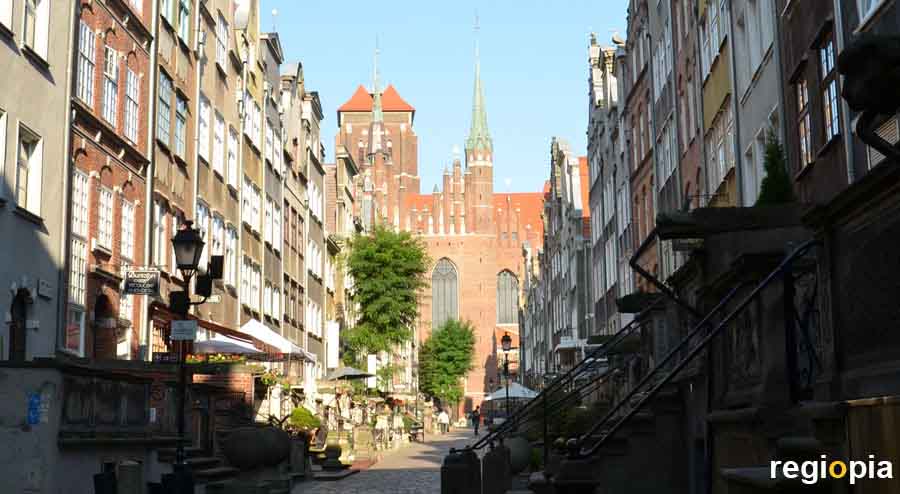
Ulica Mariacka
The former "Frauengasse" now Ulica Mariacka is the most beautiful street of the historic centre. Small shops in typical Gdansk town houses give the cobbled street a very special flair. Especially beautiful are the staircases and the dragon shaped gargoyles. There are many jewelry shops in the street that sell amber. The Ulica Mariacka leads from the Brama Mariacka to the Cathedral of St Mary.
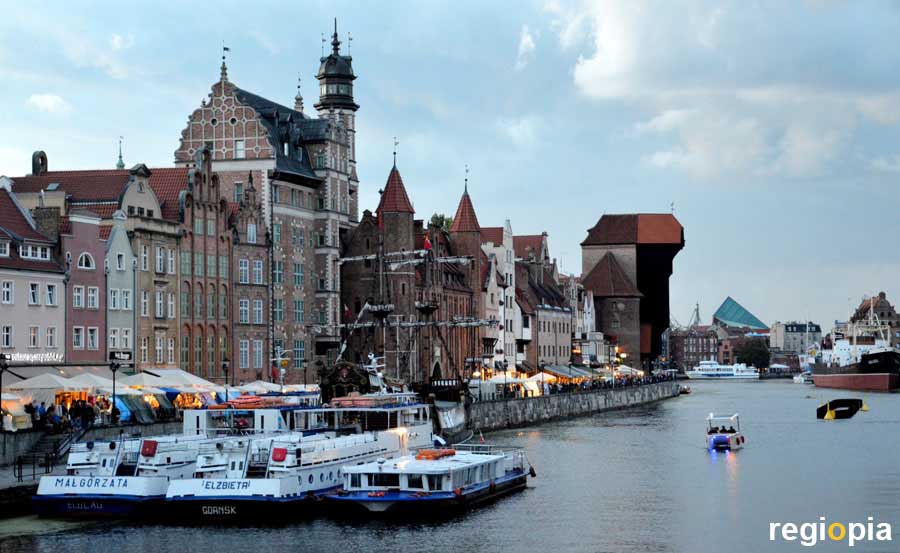
Long Bridge
The name "Long Bridge" is a bit misleading. The Long Bridge Dlugie Pobrzeze is the waterfront of Gdańsk. The former quay between Zielona Brama Green Gate and the Targ Rybny (fish market) is today a boulevard on the Motława River with many restaurants. At the Long Bridge, the city gates lined up, here is also the Crane Gate, the symbol of Gdansk. The most impressive building on the Long Bridge is the Archaeological Museum in the former merchant's house of Hans Köpe. Near the Green Gate is the Zegluga ticket office. Zegluga ferries leave for the Hel Peninsula and other destinations at the Gdansk Bay. Opposite the Long Bridge were formerly the warehouses of the merchants. This bank of the Motława is being rebuilt and will be completed in 2019. At the Long Bridge there are also several stops of the "water tram", which travels the Motława up to the Baltic Sea.
ads
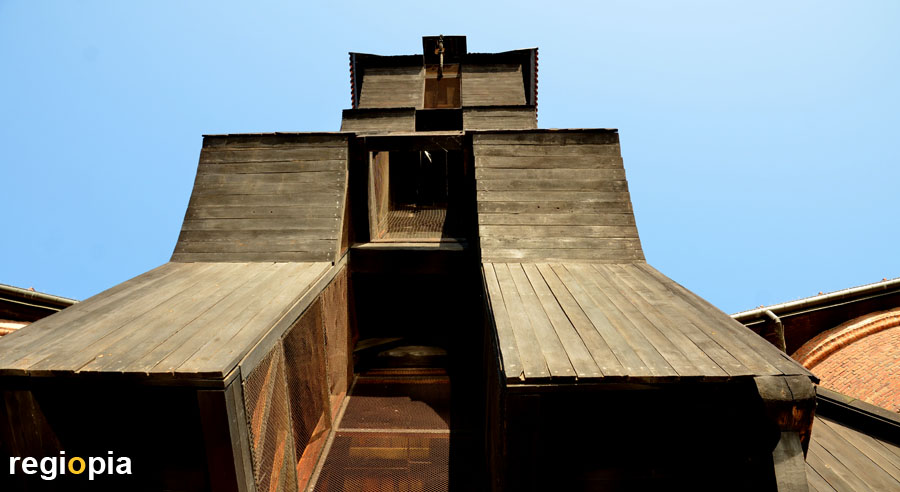
Crane Gate
The 15th century Crane Gate Zuraw is the landmark of Gdańsk. The harbor crane for loading and unloading the merchant ships was built in 1444. The winches were driven by workers pulling their weights up in wooden wheels. The Crane is part of the Maritime Museum Centralne Muzeum Morskie on the other bank of the Motlawa River. From here there is a ferry that connects the two buildings of the museum. With the entrance ticket of the museum you can visit the Crane Gate as well.
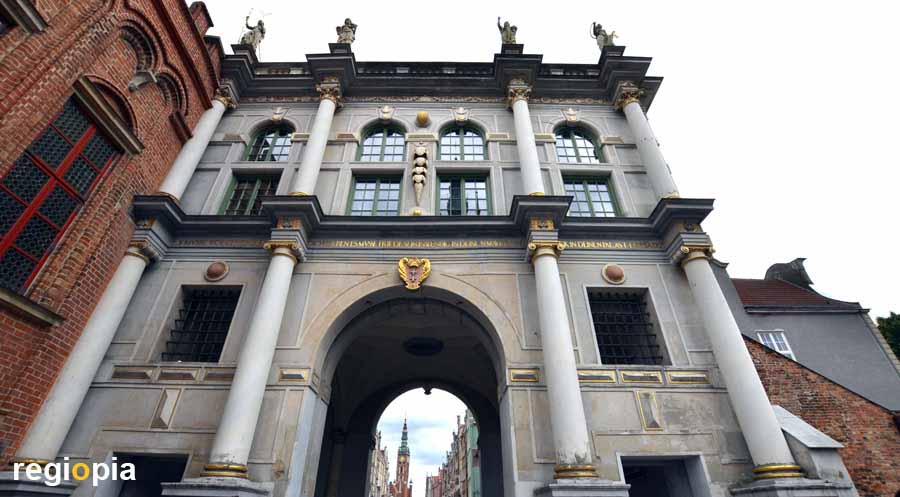
Golden Gate
The "Golden Gate" (Zlota Brama) marks the western entrance to the historic centre of Gdańsk. The Golden Gate looks like a palace in the form of a triumphal arch. This is very unusual for a city gate, which is usually located in the city walls and thus forms a bulwark against external attacks. However, the Golden Gate stands behind the Stock Tower, which was part of the medieval city fortification, so the Golden Gate had no protective functions to fulfill and could be designed freely by the architect Abraham van den Blocke. The Golden Gate was built in 1614, after demolishing the previous building "Langgassentor". On the four rows of columns are symbolic figures by Peter Ringering. Standing in front of the city you can see peace, freedom, wealth and fame, leaving the city looking down on you are wisdom, piety, justice and concord. Above the gate is written in golden letters in Latin: "Harmony makes small states great, discord causes the great ones to perish". The name Golden Gate was created by the gilded decorations on the facade.
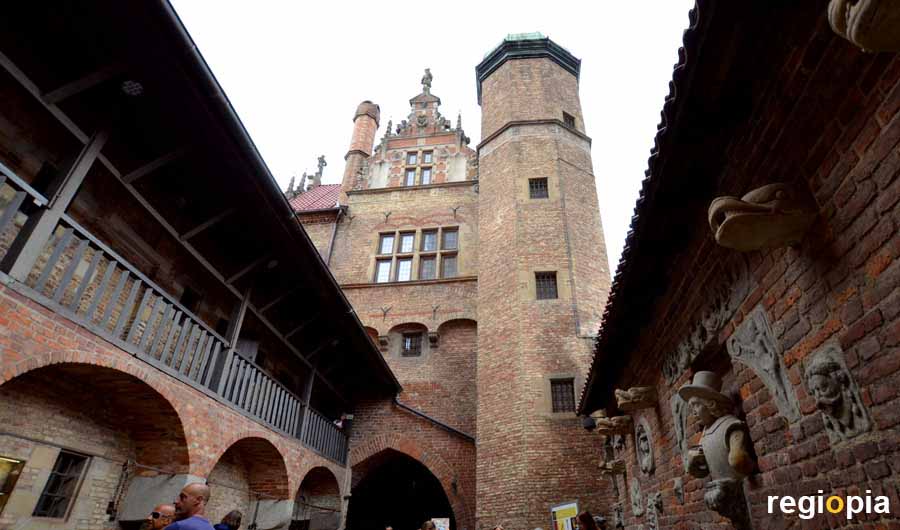
Torture chamber and prison tower
The Torture Gate stands between the High Gate and the Golden Gate at the western entrance of the city. The gate was built in the 14th century as part of the new city wall. The tower was later added and raised several times. The lower, western structure is the tormented chamber Katownia (photo). The tormented chamber was rebuilt when the "Peinkammertor" was replaced in 1588 by the new city gate (High Gate). The tormented chamber looks pretty for a torture site and was rebuilt in the style of Dutch Mannerism by Anton van Obberghen. The gate building was used as prison, torture chamber and execution site.
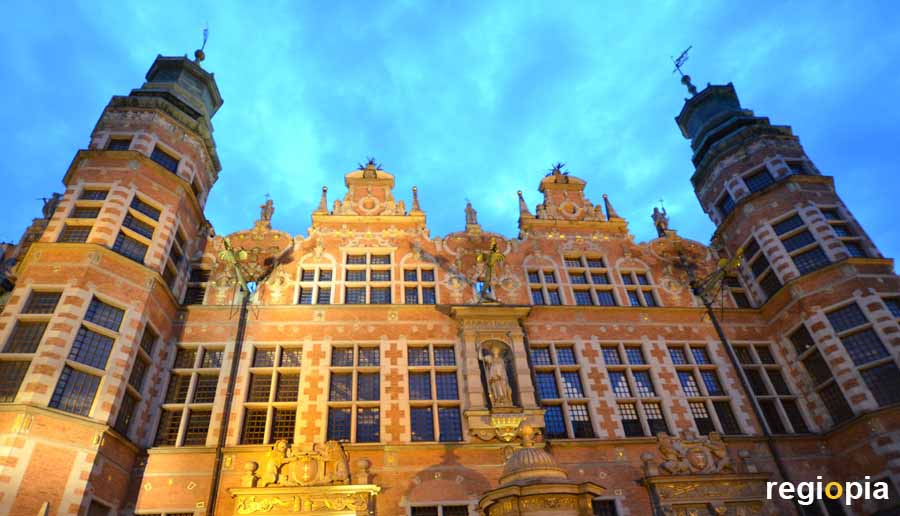
Great Armory
The Great Armory was designed in 1609 by the Flemish architect Anton van Obbergen and built by Hans Strakowski. The ornate façade on Kolodziejska Street is a remarkable example of Dutch Mannerism. At the corners are towering bay windows, figures, ornaments and gargoyles. The facade on Targ Weglowy is much simpler. Mannerism replaced Gothic as the dominant architectural style in Gdansk. The Great Armory looks like a city palace, but it served as a weapons warehouse. The building was rebuilt after the war, but the interiors were not reconstructed according to the historical model. In the Great Arsenal is today the Academy of Fine Arts Akademia Sztuk Pieknych.
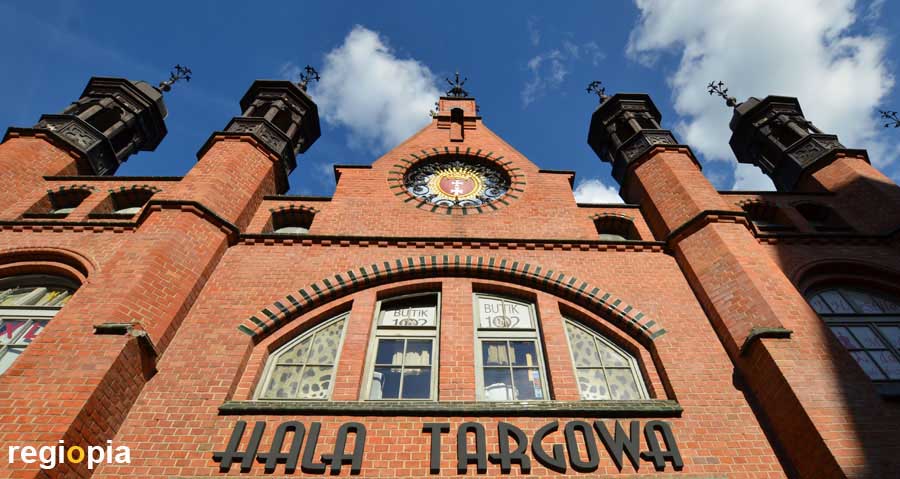
Gdansk Market hall
The market hall of Gdansk (Hala Targowa) was built in 1896 in the Gothic Revival style. Previously, the property belonged to the Nicholas church next door and was a Dominican monastery. Therefore, the market hall was called "Dominki Halle" by the German population (expelled 1945). In the middle of the market hall there is an opening in the ground, here you can see the foundations of the former monastery. The Hala Targowa is a beautiful building that was renovated in 2005, but unfortunately not a typical market hall. In the interior there are small shops with cheap clothes and everything but delicious fruits, vegetables, delicacies and what else one would expect in a market hall. In the basement, there are at least sausages and baked goods. Fruits and vegetables are sold in the stalls in front of the market hall.
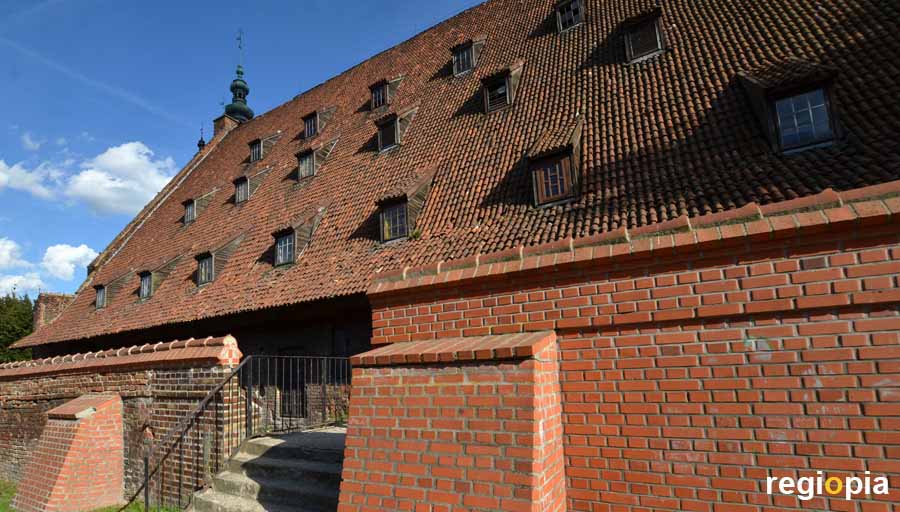
Great Mill
In the Middle Ages the Great Mill was one of the largest buildings of its kind. The Gdańsk Mill belonged to the Teutonic Order, who built the Great Mill around 1350. The 18 mill wheels were fed by the Radaune Canal and propelled the millstones, which grinded wheat, rye, barley and malt into flour. The flour sacks were stored under the huge saddle roof. Up to 200 tons of grain were ground during the day. The Great Mill was destroyed in World War II and immediately rebuilt. After the collapse of the Eastern Bloc, the historic building became a shopping center. Because of structural damage the shopping center was closed. The city administration is planning to relocate the Amber Museum from the Torture Gate to the Great Mill.
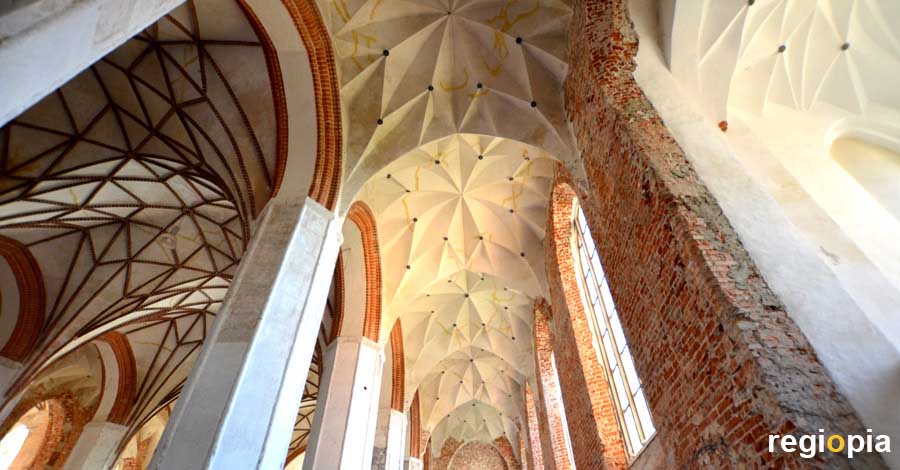
St. Catherine's Church
The first St. Catherine's Church Kosciol sw. Katarzyny was built in 1185 in Gdańsk's Old Town. In 1227, the wooden church was replaced by a Gothic church donated by the Pomeranian dukes. The three-aisled hall church impresses with its high rooms spanned by star vaults. The 76 m high church tower was built in 1486 and is one of the landmarks of Gdansk. The carillon in the tower plays Beethoven's "Freude, schöner Götterfunke" of the Ode an die Freude every hour on the hour. During World War II St. Catherine's Church was severely damaged, the vaulted ceiling collapsed and the spire burned out. The church was rebuilt and the interiors were reinstalled. A fire destroyed the interior in 2006, since then the St. Catherine's Church is under construction, but you can still visit the church.
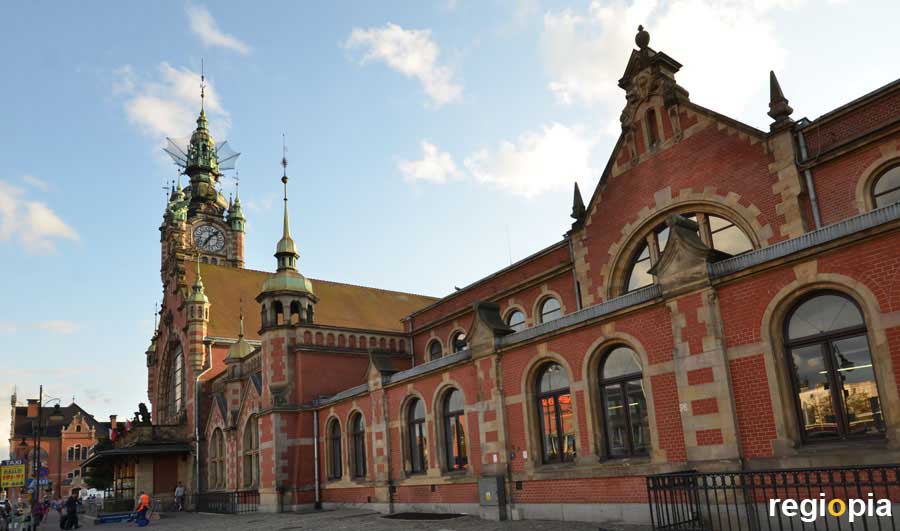
Gdansk Station
The Gdańsk Glowny railway station was opened in 1900 and is the main railway station in the Trojmiasto region. Its 48 m high tower is modeled on the copper cap of the Glowny Miasto town hall. During the Second World War, the main station was bombed and partially destroyed. After the war, it was rebuilt in the original Neo-Renaissance style. The interior is simple and has gotten nothing of the outer decor. From Gdansk railway station there are long-distance trains to Warsaw, Lodz and Krakow as well as regional trains to Malbork and Olsztyn. The Gdańsk train station is also a n urban train station of the SKM trains to Sopot and Gdynia. In front of the Gdańsk train station stands a monument to the 140 Jewish children who were sent to Britain by their parents between 1938-39 to escape the persecution by the Nazi's.
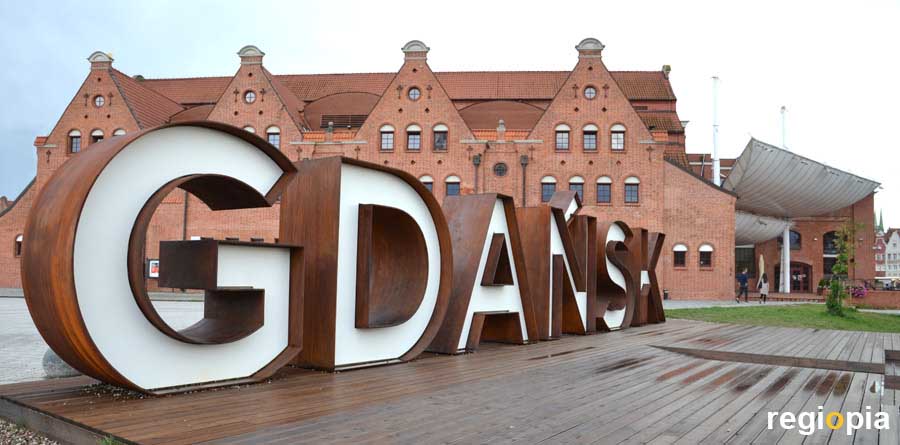
Baltic Philharmonic Gdansk
The Baltic Philharmonic in Gdańsk (Polska Filharmonia Baltycka w Gdansku) was opened in 2002. The Philharmonie is located on the Olowianka Island opposite the Long Bridge. The concert hall with 1,100 seats, and 3 chambers with 100-200 seats were built in the former Siemens Elektrizitätswerk of 1898. The redevelopment of the brick building was carried out by the Gdansk architectural office of Marcin Kosikowski. The building complex also houses conference rooms and an art hall. At the northwestern corner of the building, the architects have set a white sail. At the main entrance on the east side is a large rosette, the facade was built here in the neo-Gothic style. At the Motlawa a large Gdansk logotype was set up, which magically attracts selfie tourists.
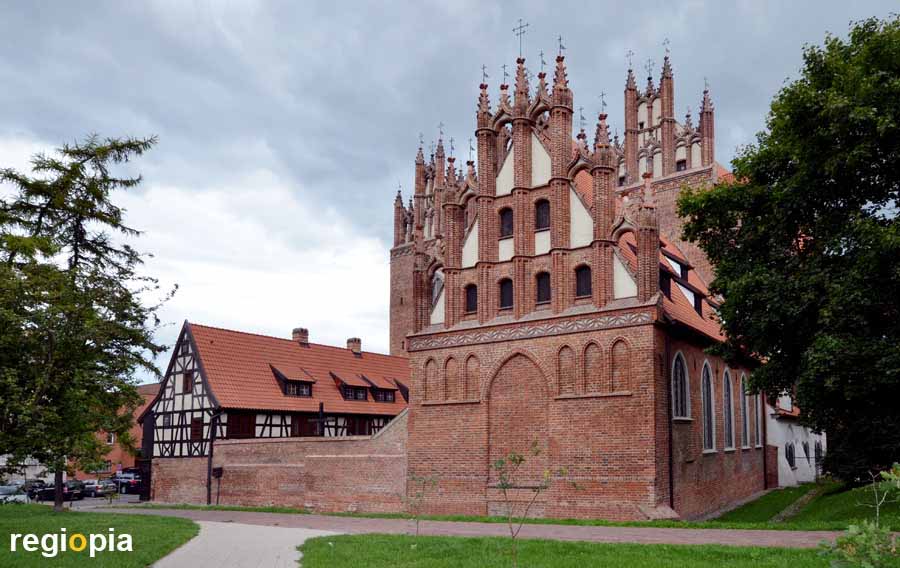
Trinity Church
The Trinity Church Kosciol sw. Trojcy was built between 1420 and 1514 by the Franciscan Order. The western facade consists of a massive brick wall with three gothic windows. The upper part of the facade consists of three filigree decorative gables, which are located in front of the saddle roofs of the three naves. The Trinity has been implemented here structurally. In front of the Trinity Church is the small chapel of St. Anne, which was built around 1480 for the Polish community. Next to the St. Anna chapel stands a half-timbered house through which one enters the churchyard, from where one arrives in the Trinity Church and the chapel. After the Reformation the Franciscan Order shrank rapidly and had to transfer the building to the city of Gdansk. The city turned the monastery into a high school in which today is the Gdańsk National Museum. The Trinity Church is famous for the beautiful carvings of the Gothic stalls and the pulpit from 1541.
ads
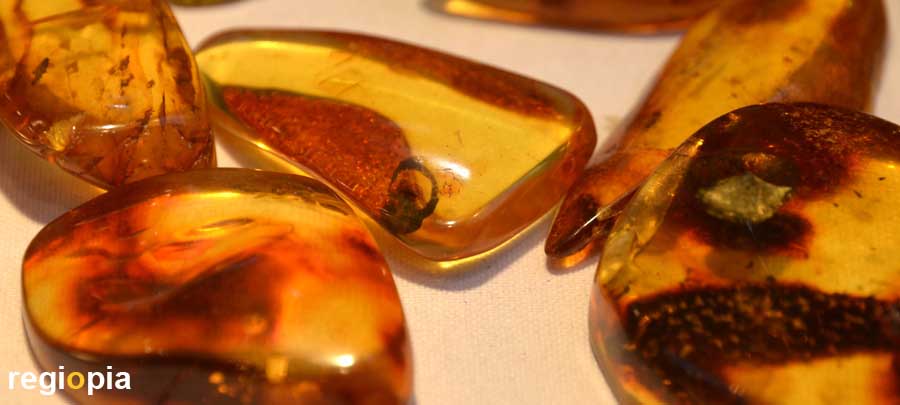
Amber
Gdansk is famous for amber, everywhere you can see jewelery shops offering necklaces, bracelets and other pieces of amber jewelery. Amber is a fossil tree resin that came from the coastal forests of the Baltic Sea into the water and is washed ashore on the beaches. Amber fishermen collect the lumps and sell them to the jewelry manufacturers. The amber is also mined, at Königsberg (Kaliningrad) there is such a site. There are different varieties of amber. Most of the amber from the Baltic Sea region bears the scientific name succinite. The Gdańsk Amber Museum is currently in the Prison Tower, but will move in a few years in the Great Mill.
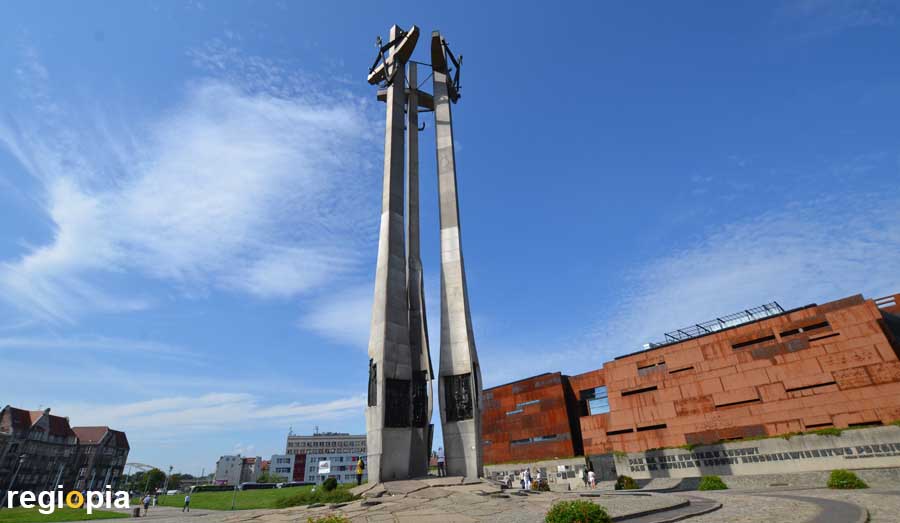
Shipyard Worker Monument
The shipyard worker monument (Pomnik Poleglych Stoczniowcow) on Solidarnosci Square commemorates the dead shipyard workers who were murdered by the Communist Party of Poland in 1970. After massive price increases, there were strikes and demonstrations in several cities. The communist puppet state of the Soviet Union resolved the strike in the Gdansk shipyard with armed force. According to official figures, 45 strikers were killed, the actual number was around 80 dead. The Free Union Solidarnosc was founded later, however, one of their demands was to erect a monument to the dead colleagues. In 1980 the monument with the three crosses was unveiled. The 42 m high crosses were designed by the artists Bogdan Pietruszka, Wojciech Mokwiński, Wiesław Szyślak and Jacek Krenz. In 2014, the Europejskie Centrum Solidarnosci was opened in the immediate vicinity. (The Corten steel building in the background)
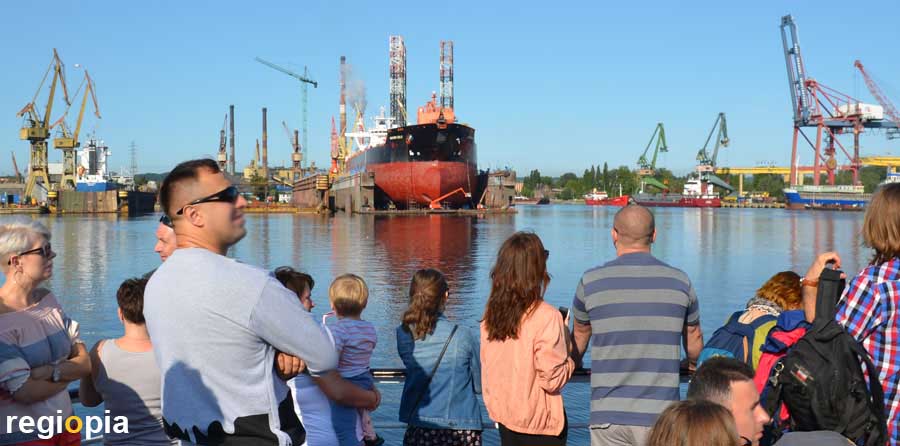
Gdansk Harbor Cruise
The harbor tour begins at the Long Bridge, you can take a tour with the excursion boats from Zegluga, drive with a pirate ship from Perlalew or use the water tram. The harbor tour leads from the old town of Gdansk through the shipyard area, here you can see the typical green cranes that have become a landmark of Gdansk. The journey continues to the fortress Weichselmündung and Westerplatte. Depending on the tour you can get off here and visit the "Monument of the Defenders of the Coast".
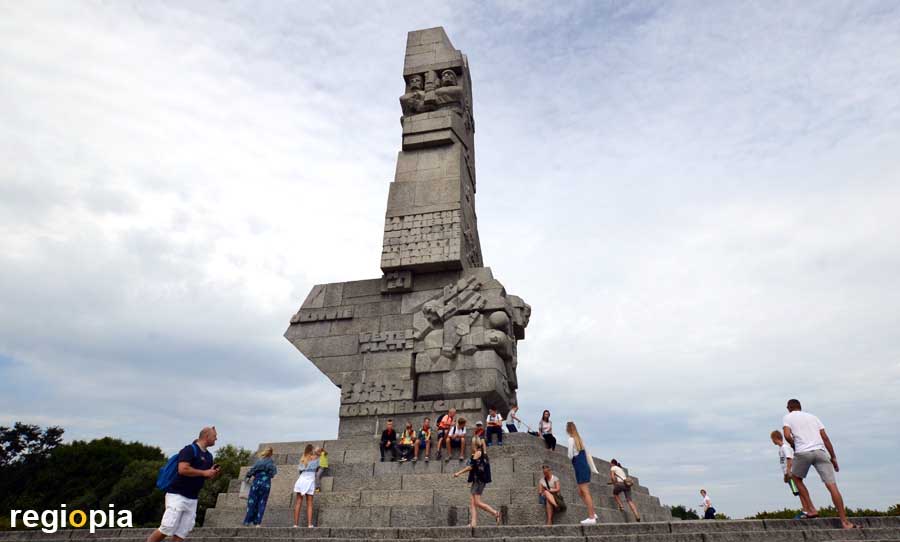
Westerplatte
The Westerplatte is a promontory at the mouth of the river Martwa Wisla into the Baltic Sea. From the Westerplatte one can control the port of Gdansk. After the First World War Gdansk was separated from the victorious powers of the German Reich and declared Free City of Danzig. After the Treaty of Versailles Poland got access to the Baltic Sea but had not yet built a port on it`s new shoreline. Therefore, the League of Nations allowed Poland to build an ammunition storage on the Westerplatte in the city of Danzig. After Poland had built the port city of Gdynia, the Westerplatte was to be cleared again, which Poland did not do, but stationed more soldiers and strengthened the bunkers. At that time Danzig was a German city (90% of the population was German) and Poland's military base on German soil was perceived as a provocation in Germany. For this reason, Adolf Hitler chose the Westerplatte as the first target to be attacked. On September 1, 1939, the warship Schleswig-Holstein bombarded the Westerplatte. Since the Polish defenders had entrenched themselves in bunkers it was not easy for the Germans to storm the terrain. After a week, the Poles finally surrendered. In Poland, the soldiers of the Westerplatte are celebrated as heroes. The Westerplatte Monument Pomnik Obrońców Wybrzeża "Monument of Defenders of the Coast" was erected in 1966. It consists of 236 granite blocks, which were piled up to a 23 m high monument. The Westerplatten monument was designed by the artists Franciszek Duszeńko, Henryk Kitowski and Adam Haupt. It stands on an artificial hill that is not high enough to look over the surrounding trees. There is a small museum in the guard house No. 1 and a new Museum Westerplatte is planned.
How to get to the Westerplatte?
Boat:
You can take the "water tram" Tramwaj wodny F5 from the Green Bridge over the Motława River to the Westerplatte.
Bus:
The bus lines 106, 138 and 606 go directly to the Westerplatte. It is best to ask at the hotel where the next stop is. The buses rarely go. Tickets are bought at a kiosk before.
Taxi:
From Gdańsk Główny Station to the Westerplatte it is about 12 km.
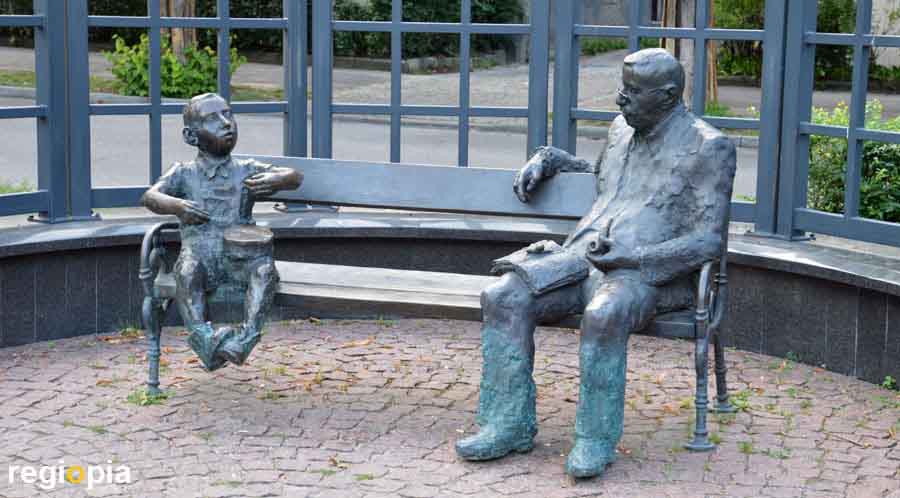
Danzig-Langfuhr (Wrzeszcz)
The German writer Günter Grass grew up in Danzig-Langfuhr. The district is now called Gdansk-Wrzeszcz and is the modern center of Gdansk, with the university a major transit station and new shopping centers. However, one should not expect too much, the gentrification is still in its infancy. Anyone expecting a hip student district will be disappointed by Wrzeszcz. A walk through Wrzeszcz can be worthwhile if you are interested in Günter Grass. Not far from the station lies the small park in which Günter Grass sits with Oskar Matzerath from the novel Blechtrommel (tin drum) on a bench. Günter Grass lived in Labesweg 13 today the street is called Ulica Lelewela. The street named after a Polish freedom fighter is located on the small square where the two sculptures sit on the bench. Wrzeszcz houses the German Consulate and the main building of the Technical University of Gdansk.
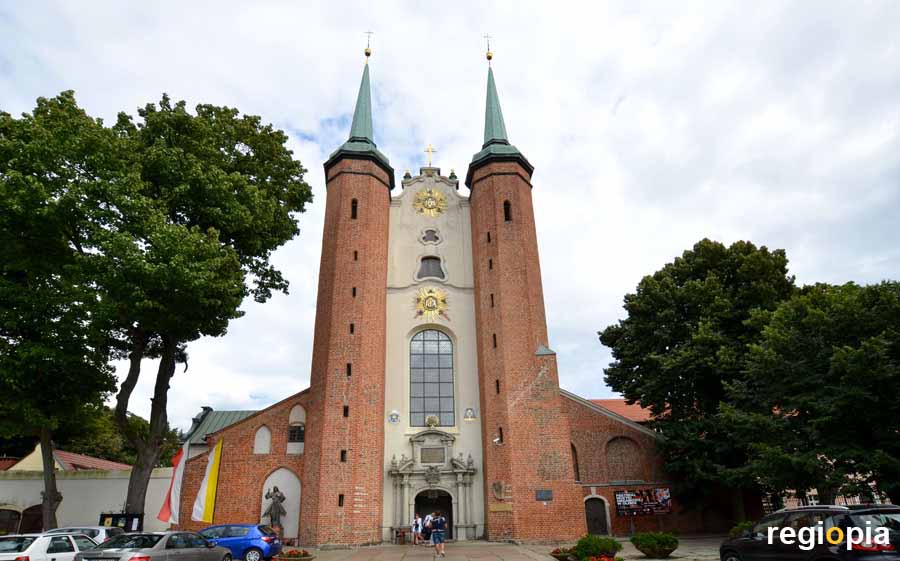
Oliwa Cathedral
The cathedral in Gdańsk's Oliwa district was founded as a Cistercian monastery in the 13th century. When the church burned down in 1350, it was rebuilt in the Gothic style. Around 1580, the vaults were completed. The main portal was built in 1771 in the late Baroque style and the interior is Baroque or Rococo, since the interior was destroyed in 1577 by a fire. In 1926, the cathedral of Oliva became the episcopal seat of the Diocese of Gdansk. The cathedral also houses the Tomb of the Pomeranian Dukes. Worth seeing is the organ, which was built in 1788 by master Johann Wulf and was by then the largest organ in Europe. The high altar is most likely from Andreas Schlüter and was completed in 1693.
How do you get there?
From Gdansk Glowny railway station, several tram lines go to Oliwa. From the station you walk about 800 m through the Oliwski Park to the cathedral. The Oliwa S-Bahn station is 1.2 km away.
Tourist Map Gdansk
ads
Travel Guide Gdansk
Welcome to Gdansk
Gdansk has had a very changeable history. The city was founded as a Slavic settlement, the Teutonic Order developed Gdansk and made it German Hanseatic City. It was almost completely destroyed in World War II and belongs to Poland since 1945. The destroyed old town was rebuilt, but more to restore the character of the city than to actually reconstruct historic buildings. However, the reconstruction of Gdańsk and Warsaw is considered one of the greatest achievements in reconstruction in Europe. Gdansk is now a beautiful city again.
ads
ads


